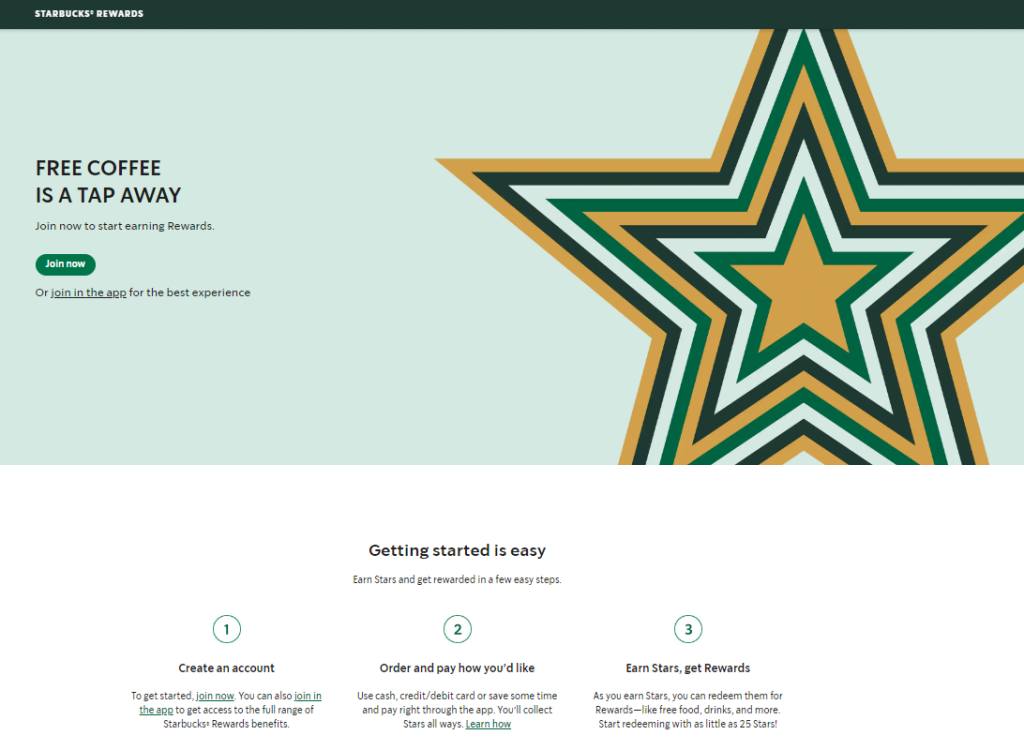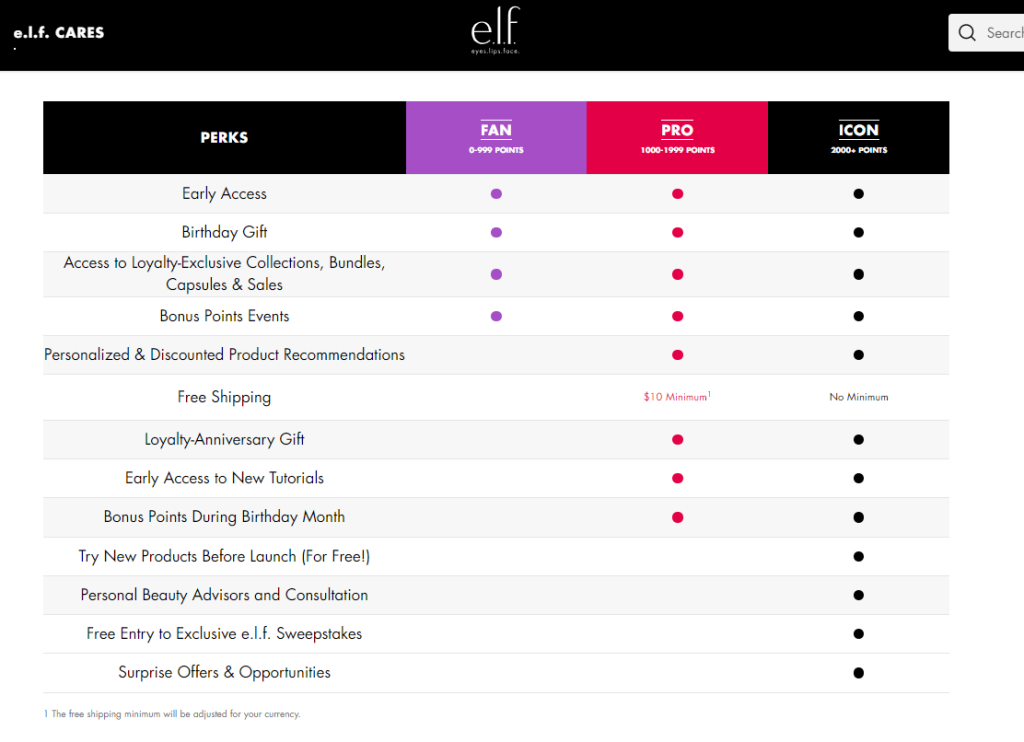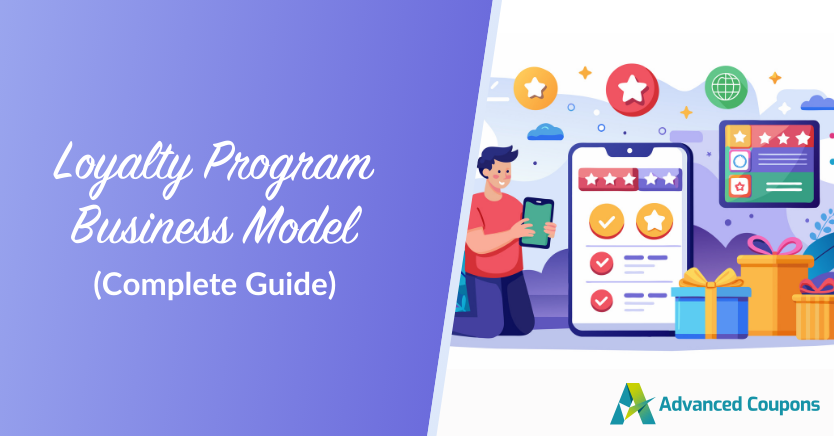
Customer loyalty is more crucial than ever in today’s competitive market, where everyone is vying for your shopper’s attention. If you really want your business to thrive in the long run, you’ll need to put effort into building strong customer relationships. One of the most effective ways to do this is by implementing the loyalty program business model.
This system rewards customers for their support, encouraging them to keep coming back. In this guide, we’ll walk you through everything you need to know about this model. We’ll also provide 7 loyalty program best practices to help you build a reward system that works.
Ready to dive in? Let’s get right into it!
What Is The Loyalty Program Business Model?
Loyalty programs reward customers for engaging with your business–whether through a purchase, referring a friend, or interacting with your brand. It’s strategically designed to keep customers coming back by offering incentives that shoppers can redeem over time. These incentives can be anything from discounts to freebies, store credits, or exclusive access to deals.
The main goal of the loyalty program business model is to strengthen your relationship with your customers. By rewarding them for their support, you enhance their experience with your brand and make them feel appreciated. It’s a win-win for both sides–customers enjoy perks, and you benefit from increased customer retention and lifetime value.
How Does A Loyalty Program Work? (Types And Examples)
The loyalty program business model sounds simple in context: reward customers for engaging, and they’ll be more likely to purchase from your store again. However, rewarding and redeeming may look different depending on the type of loyalty program you implement.
Let’s take a quick look at the most common types of loyalty programs below:
Points-based loyalty programs
This is one of the most common loyalty program strategies, where customers can “earn points” for specific actions, such as buying a product, referring a friend, signing up for an account, etc. Points can then be redeemed for discounts, freebies, or other perks.
The Starbucks Rewards program is a good example. Customers earn stars for every order, which they can redeem for drinks, food, or exclusive perks like birthday treats.
Tiered loyalty programs
In this type of loyalty program, customers enjoy different levels of rewards based on their total spending or engagement. By spending more (or engaging with the brand), they move higher up the tiers and unlock better perks. Take a look at the example below:
The e.l.f. Beauty Squad customer loyalty program allows customers to earn points and offers them exclusive rewards depending on tier levels – FAN, PRO, and ICON.
Cashback programs
Cashback loyalty programs offer shoppers a percentage of their purchase amount back as a reward. The Rakuten Cashback model is a great example of this. In this system, customers earn up to 30% cashback on purchases made through Rakuten’s affiliated stores.
What Are The Benefits Of Loyalty Programs?
The loyalty program business model offers key benefits to your business.
Incentivizing customers for their purchases (or engagement) encourages them to keep coming back to your store. This is good news for your customer retention efforts! Studies show that acquiring new customers can cost up to seven times more than keeping current shoppers. By focusing on retaining your shoppers, you can reduce marketing costs and build a loyal customer base.
These programs also help increase customer lifetime value. Simply put–shoppers are more likely to spend more if they know they’ll be rewarded for their purchases. In the long run, this potentially leads to higher average order values, which grows your bottom line.
Lastly, loyalty programs help you provide a better overall shopping experience for your valued customers. Apart from rewarding their loyalty, these programs provide valuable insights into their purchasing behavior and preferences. You can then use this data to create more compelling offers and incentives that match their needs.
Overall, you improve customer relationships through loyalty programs. And as you might expect, your most loyal customers are the same ones who will refer your business to others and choose you over competitors.
How To Implement A Winning Loyalty Program (Best Practices)
Now that we understand the loyalty program business model and its benefits, you’re probably eager to craft your own program! Creating it is one thing, but ensuring its success is another.
In this section, we’ll explore 7 proven strategies to help you build a loyalty program that stands out.
1. Define your goals
The goals you set at the beginning will shape the entire structure of your loyalty program. It’s also the “compass” that can help you determine what type of rewards you’ll offer, how to engage shoppers, and what metrics to measure.
Take a good look at the aspects you want to improve in your business. Perhaps you’re actively trying to encourage more referrals to grow your customer base, or wanting to increase average order values. Or maybe you want to increase your social media engagement levels? These goals will help you determine what type of loyalty program will work best for your business.
This brings us to our next point…
2. Choose the right type of program
Now that you’ve defined your goals, it’s time to choose the right type of loyalty program that aligns best with your objectives. Each type (which we’ve touched on earlier) offers a different benefit.
For example, if you want to encourage repeat purchases more frequently, a points-based program might be best for you. Tiered programs, on the other hand, are great for long-term brand engagement. They reward customers as they reach “higher tiers”, which motivates them to keep spending more over time to reach the next level.
3. Offer compelling rewards
In order to create an effective loyalty program that people will love to be part, you have to offer enticing perks that speak to what your customers need. Take a moment to assess your current customer base… What excites them? For example, if your customers are motivated by savings, offering discounts on future orders might be a good option.
Here are just some of the other options you can explore:
- Discounts off next purchases: Offer a percentage off or a dollar amount of your customers’ next orders to encourage them to shop again. Consider making exclusive discount coupon codes for loyalty members to add a sense of exclusivity.
- Store credits or gift cards: This option gives them the opportunity to choose what to spend their rewards on in your store.
- Free shipping: One of the most common reasons for cart abandonment is high shipping costs. Offering this perk can help encourage your customer to complete their purchases.
- Free products: You can also incentivize orders by rewarding customers with free products. It’s a great way to introduce them to offerings they might have not tried yet. Take a look at the example below:
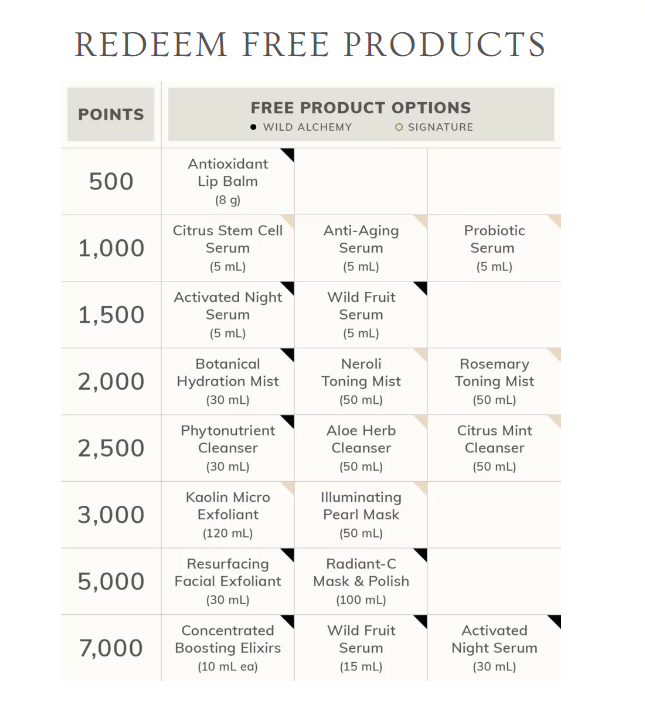
4. Provide easy sign-up
This is key–make the signup process as easy as possible. Customers will be more likely to join if you provide a simple and straightforward loyalty enrollment process.
To reduce friction, avoid asking for too much information upfront and offer multiple ways to join. For instance, you can integrate the enrollment process during checkout, when customers make their first purchase. Another way is by offering social media or email sign-ups, allowing customers to join quickly using existing accounts.
Make sure your customers know what’s in it for them clearly, whether it’s free shipping or a coupon off their first order. This will encourage them to join your program from the get-go.
5. Make it fun–gamify!
Want to keep customers engaged? Add a touch of fun through gamification. This is the art of adding “game elements” to something to increase participation and engagement. There are several creative ways you can apply this to your loyalty program.
Here are just a few examples:
- Add points and levels: This will work particularly well if you’re launching a points-based loyalty program. Allow customers to “earn points” for every action they take and let them unlock rewards as they level up.
- Challenges or quests: You can also introduce challenges or quests to make point-earning more fun. For instance, you can offer double loyalty points on certain promotional periods or complete a specific action.
- Achievements: Reward customers with digital trophies or badges when they reach specific milestones as a customer, alongside a perk or exclusive deal. This gives them a sense of accomplishment, which can increase engagement levels.
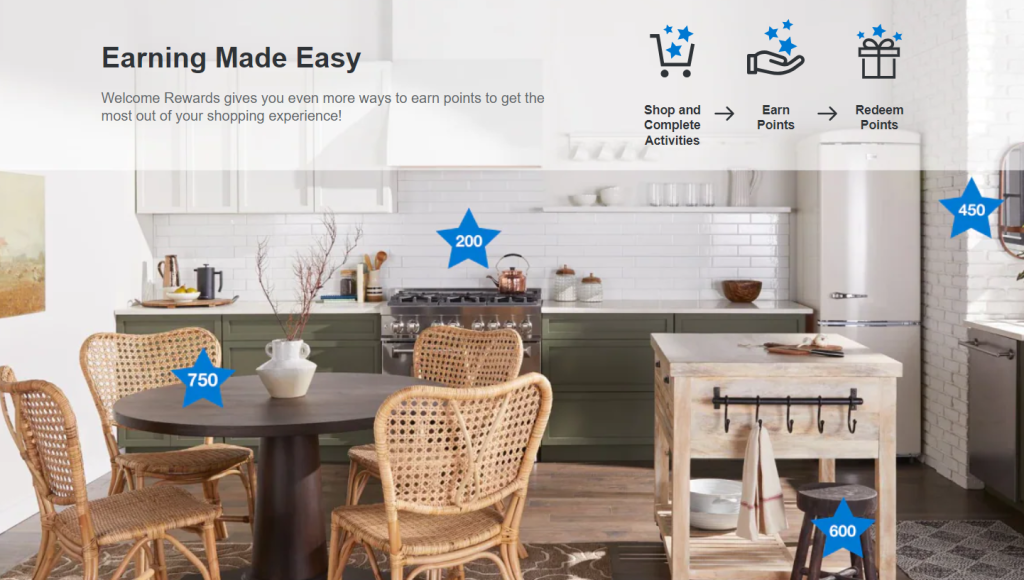
6. Spread the word
Don’t miss out on this important step! Leverage multiple channels to spread the word about your loyalty program. Effective promotion informs customers about the benefits of joining your program, encouraging them to join.
Firstly, make sure it’s clearly visible and accessible on your website. You can use banners, and pop-ups, or even create a dedicated landing page to fully explain the perks of being a member.
If you have an email list, then make sure to use this as a promotional tool as well. It’s a powerful way to connect with customers at a more personal level, giving you the opportunity to inform them of the benefits and offer exclusive sign-up perks.
And of course, don’t forget about social media–platforms like Instagram, Facebook, and TikTok offer opportunities to promote your loyalty program through posts, stories, and video content.
7. Monitor and adjust accordingly
At the beginning of launching your loyalty program, you’ve identified the key metrics that matter based on your business goals. Depending on your objectives, these may be metrics like average order values, redemption rates, or customer engagement levels. It’s important to keep an eye on these metrics to assess the effectiveness of your loyalty program.
Don’t be afraid to iterate as you go. For instance, if you notice that program sign-up levels are low, you may consider modifying your perks or making rewards easier to achieve. Gathering feedback from customers can also help.
By reviewing the performance of your loyalty program regularly, you can ensure it stays relevant and effective for your business.
How To Set Up A Loyalty Program In WooCommerce (Step-By-Step)
Thankfully, launching an effective loyalty program doesn’t have to be a daunting task for business owners. WooCommerce store owners, for instance, can leverage tools like the Advanced Coupons’ Loyalty Program plugin.
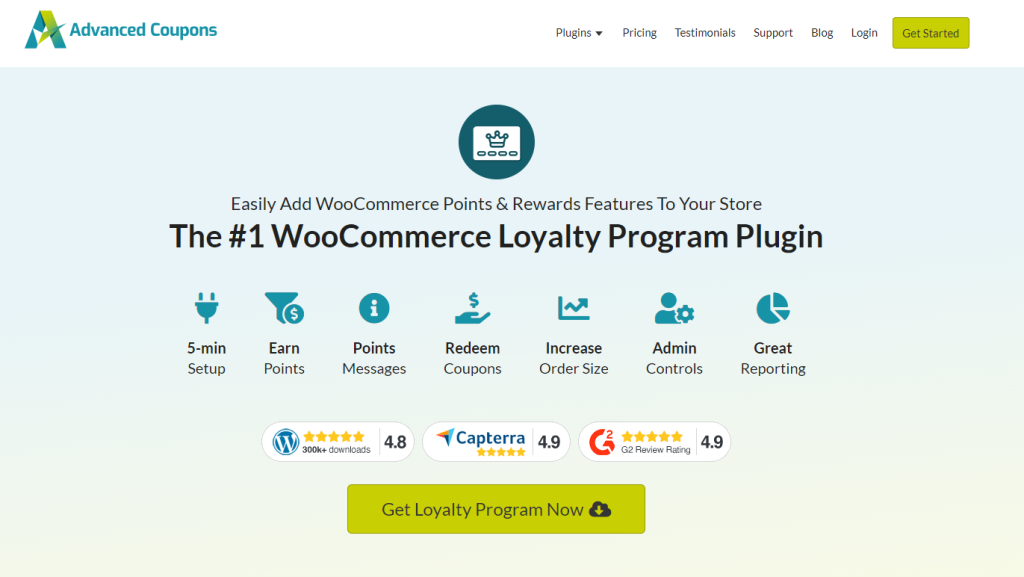
This powerful plugin allows you to set up a loyalty program in your WooCommerce store in minutes. It also offers an intuitive dashboard, letting you to monitor the performance of your program. With this plugin, you can grant customers points whenever they purchase, leave reviews, set up accounts, and so much more!
Learn more about the steps for setting up a loyalty program in WooCommerce here.
Frequently Asked Questions
How does a loyalty program earn money?
Loyalty programs encourage repeat purchases and foster customer retention. This results in a higher customer lifetime value (CLV), which drives revenue growth for businesses in the long run.
How to structure a loyalty program?
Start by defining your business objectives and choosing the type of loyalty program that can help you meet these goals. Examples include a points-based and tiered loyalty system. Then, define how customers will earn rewards and what perks they’ll receive. Keep it simple for customers to understand, and spread the word through email marketing, social media, or website features.
How does a loyalty program model work?
Loyalty programs work by offering customers exclusive rewards and perks in exchange for their engagement with your business. Perks can include discounts, freebies, exclusive deals, and more, giving customers a reason to keep coming back to your store. This cycle of earning and redeeming fosters customer retention and loyalty, which contributes to long-term business growth.
What are the top loyalty programs for WooCommerce stores?
There are several loyalty plugins available for WooCommerce, but one of the top-rated loyalty programs is WooCommerce Loyalty Program. It’s designed to help store owners easily reward their customers with points for actions like purchases, referrals, and account signups. The plugin features a clean dashboard, flexible point settings, and seamless coupon integration, making it one of the most powerful yet beginner-friendly options for WooCommerce stores.
Conclusion
Loyalty programs are powerful tools to deepen customer relationships and keep them engaged with your brand. In this complete guide, we’ve walked you through the ins and outs of the loyalty program model and provided key strategies to help you create a successful program.
To summarize, let’s review these strategies below:
- Define your goals
- Choose the right type of program
- Offer compelling rewards
- Provide easy sign-up
- Make it fun–gamify!
- Spread the word
- Monitor and adjust accordingly
One of the top top loyalty plugins for WooCommerce is WooCommerce Loyalty Program. It’s beginner-friendly, easy to use, and packed with powerful features to reward your customers and boost retention.
Do you have any questions about this topic? Let us know in the comments!


